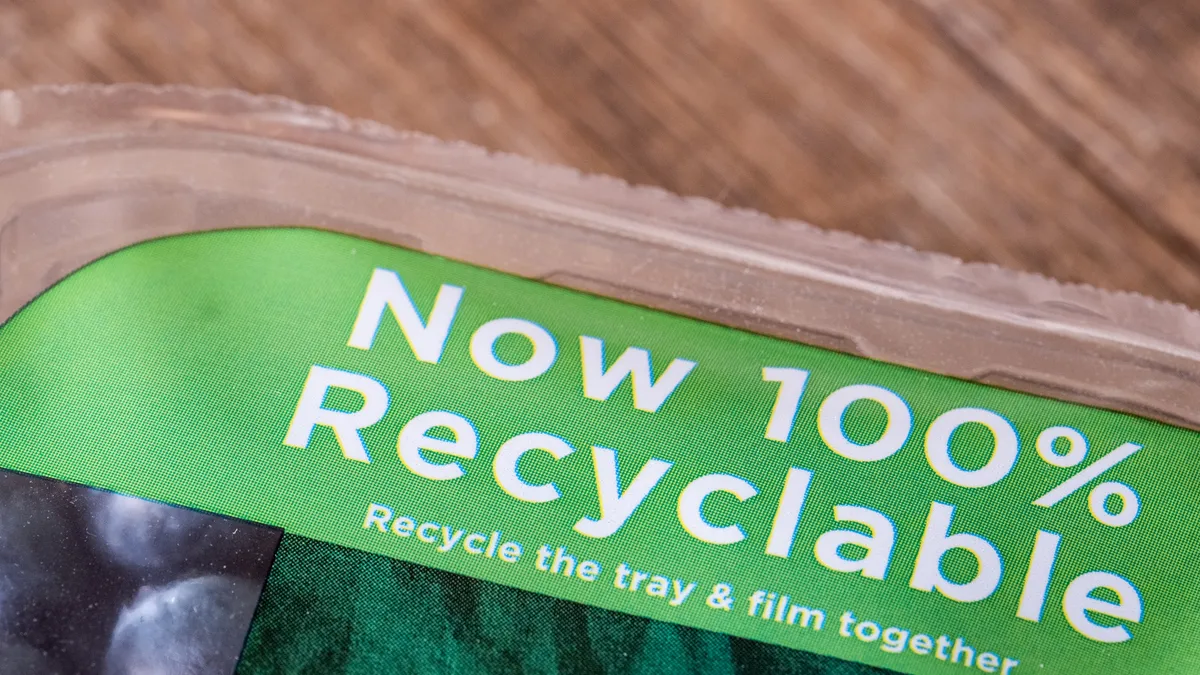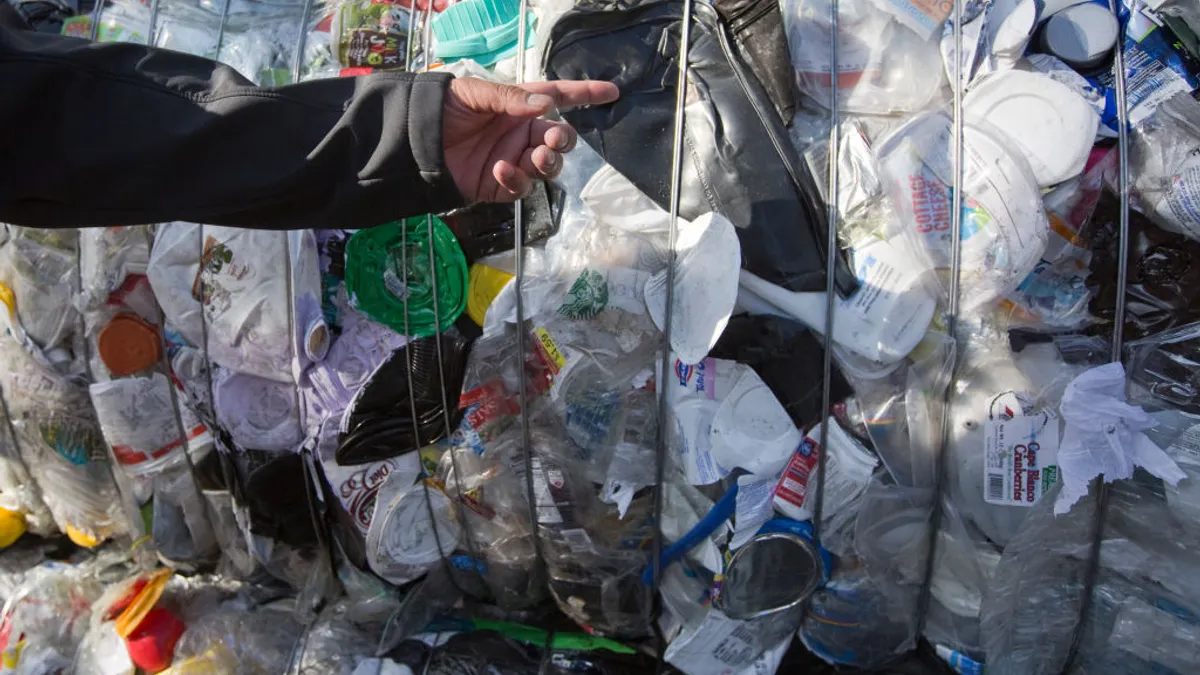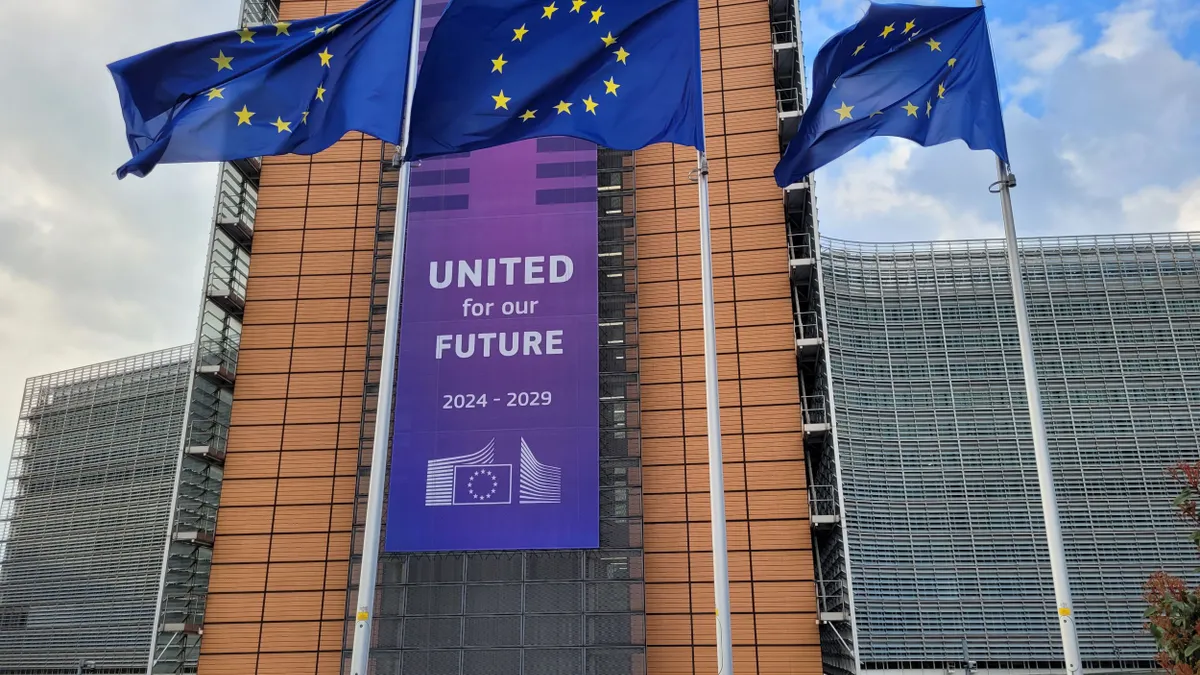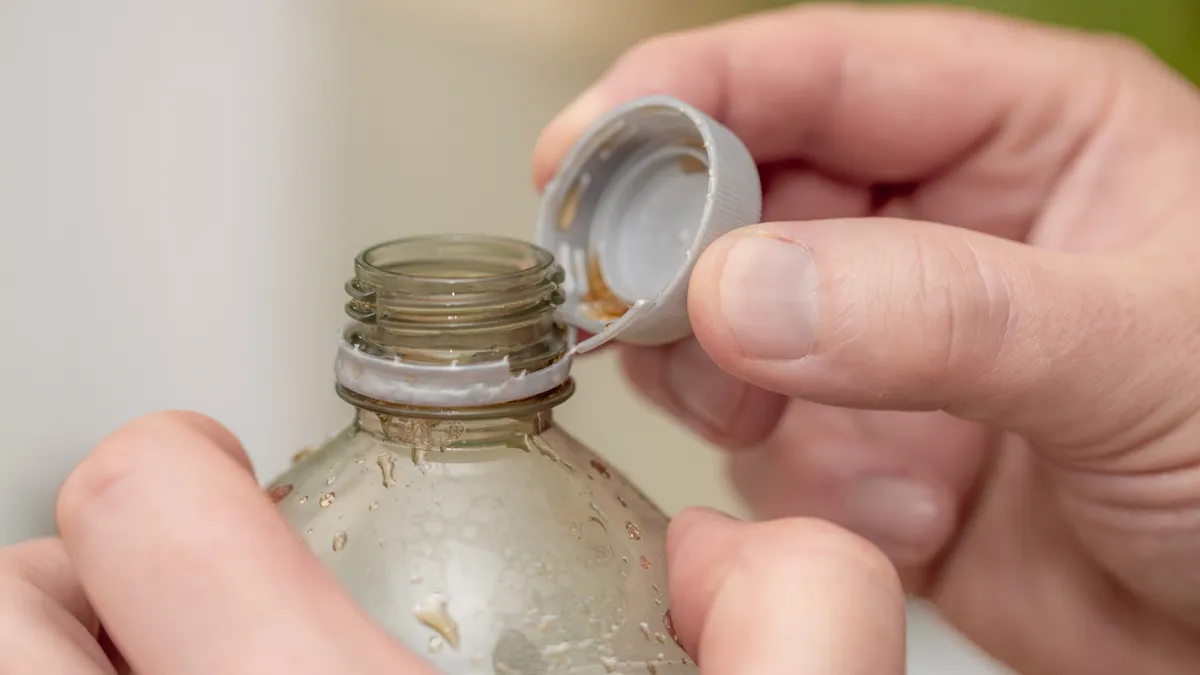“Greenwashing” is a well-understood concept among brands. A newer term — greenhushing — has spun off and is creeping into sustainability talk, bearing an equally unfavorable connotation.
Greenhushing occurs when companies underreport or refrain from publicizing their progress on environmental work as a means to prevent potential criticism from regulators, environmental groups and nonprofits, stakeholders or the general public. More and more, the term enters packaging discussions on social media, at industry events and beyond.
“Brands may be potentially obfuscating or failing to promote sustainability efforts that are underway to avoid the accusations that occur, and that's not helping anything,” said Matt Reynolds, chief editor at Packaging World, during the Packaging Recycling Summit on Sept. 16. “Lips are getting tight ... and that's based on reputational risks — whether earned or perceived.”
The term greenhushing gained prominence following an October 2022 report from carbon finance consultancy South Pole that brought the phenomenon to the forefront. It spotlights a statistic that nearly a quarter of the 1,200 surveyed companies had set science-based targets for reducing emissions but didn’t plan to publicize them.
Earlier this year, South Pole released its 2023 data from a global survey of 1,400 companies and said this “confirms, for the first time, that the trend of 'greenhushing' is present across nearly every major sector around the world,” including consumer goods. Although 81% of responding companies reported that communicating about net zero is good for their bottom line, 58% deliberately planned to decrease external communications about it, according to the report. And 18% did not plan to publicize their science-based targets at all.
The term is coming up more in discussions about packaging sustainability as lawsuits over environmental claims arise and CPGs face scrutiny for not meeting, or changing, 2025 climate and packaging sustainability goals.
"Greenwashing charges are absolutely terrifying retailers."

Scot Case
Vice president of corporate social responsibility and sustainability at the National Retail Federation
That raises the question of whether greenhushing, which pertains solely to communications, will result in a wholesale pullback on sustainability efforts. For instance, last year Michelle McEttrick, the chief customer officer for retailer Primark, said during a Marketing Week event that greenhushing is occurring, and if the trend continues it could result in brands backing down from their sustainability commitments. She said “it all risks real progress across industry.”
But packaging industry experts suggest greenhushing simply reflects brands tempering their messaging and that the relevant information will be released in due time — and it's important to separate companies’ commitments from their progress.
"To me, it makes sense to actually see how [sustainability efforts] are playing out before making broad claims about them. It is a prudent reaction in today's environment," said Scott DeFife, president of the Glass Packaging Institute, during an interview. "This is all evolving."
As the concepts evolve, so do ideas of how to address greenhushing.
“The discussion around greenhushing is a reality. People are afraid of what may come of their public statements or public positions,” said Jonathan Quinn, CEO of the U.S. Plastics Pact, during an interview. “There’s some element of finding a balance. But ultimately it goes back to being able to align with targets and positions — that there’s uniform consistency.”
It's a wash
Greenwashing is nothing new, but it’s gotten more attention as stakeholders eagerly await the Federal Trade Commission’s release of its potential updates to the Green Guides — environmental marketing guidance last updated in 2012 — and as new packaging regulations pass.
“Greenwashing charges are absolutely terrifying retailers,” said Scot Case, vice president of corporate social responsibility and sustainability at the National Retail Federation, during an educational session at E-PACK in Chicago on Oct. 1. “Pretty much any claim that retailers and manufacturers are making, consumers can claim that's greenwashing, which makes communicating the value proposition around sustainability one of the biggest challenges for retailers.”
The lack of a singular definition for “sustainable,” and the fact that consumers are “no longer necessarily looking at just a single attribute,” further complicates the issue, Case said. For example, consumer views on sustainability now could involve energy efficiency and carbon emissions along the value chain. While packaging doesn’t account for the majority of a product’s carbon footprint, “it's the most visible aspect of sustainability for many consumers,” and therefore retailers pay attention to it, he said.
Packaging’s recycled content and recyclability claims are two key areas under scrutiny.
“We have to be very careful about precisely what we say about whether a product is recycled or not,” said DeFife. “Consumers and consumer watchdog groups and environmental groups and NGOs and even shareholder groups are watching what brands say about their voluntary commitments.”
Backlash and lawsuits continue to crop up over allegations of deceptive or misleading environmental marketing. Colgate-Palmolive became entrenched in a notable lawsuit brought by consumers who said the company’s claims about the recyclability of the HDPE toothpaste tube it introduced in 2022 were false or misleading. And just this summer, a federal court of appeals ruled that Coca-Cola must face an environmental nonprofit's lawsuit over deceptive environmental and recycling claims, which the CPG essentially wrote off as harmless exaggerations.
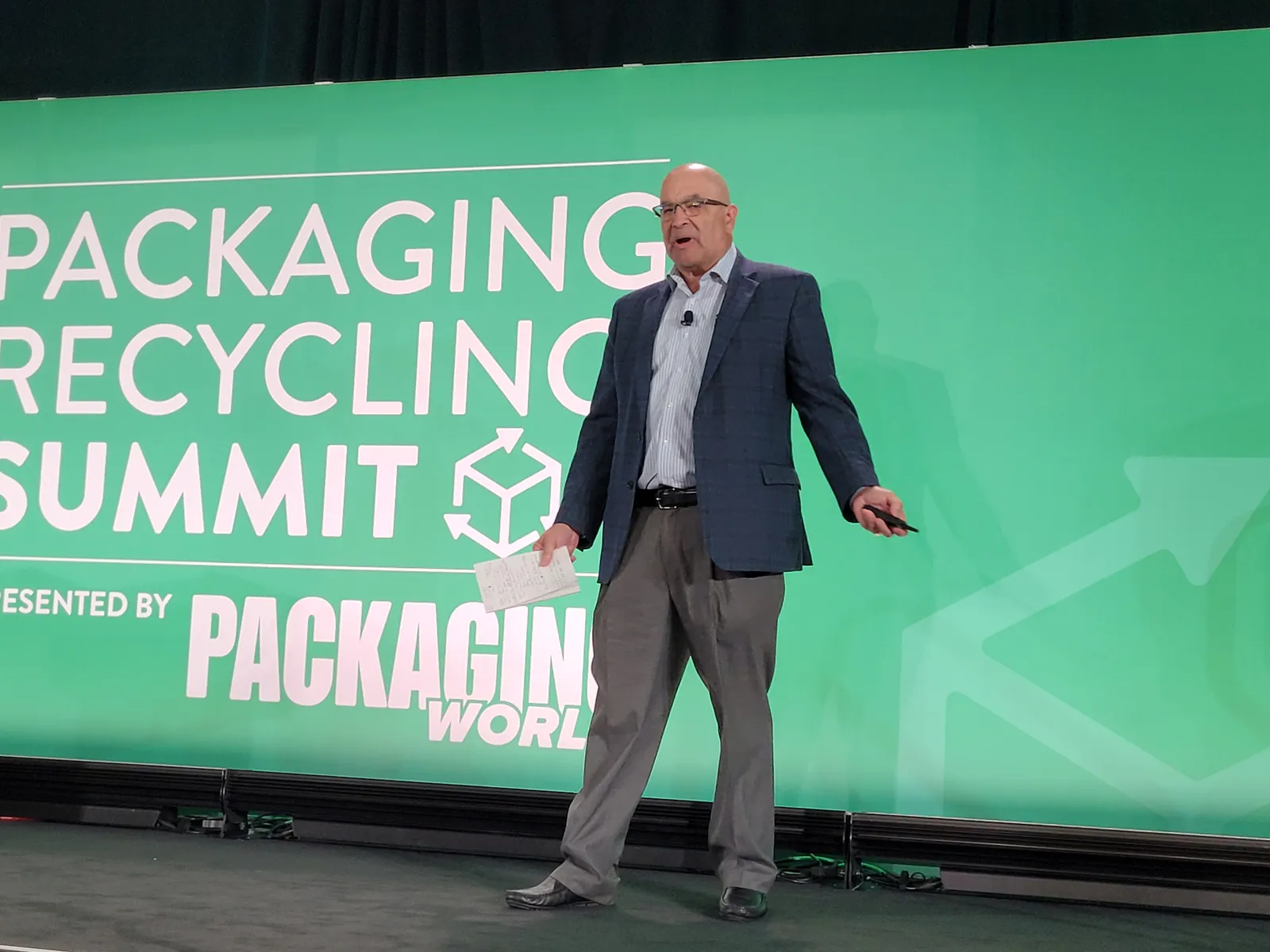
“The thing that blew my mind about this is in the company's defense, they argued, 'Hey, our statements were just 'classic puffery,'" said Myles Cohen, founder of consulting firm Circular Ventures, during a presentation at the Packaging Recycling Summit on Sept. 17 that touched on greenwashing. He referred to greenwashing as a “pet peeve” of his that is damaging not just to individual companies but the packaging and recycling industries as a whole.
Cohen described how some brands' messaging on their packaging, even when not overtly greenwashed, can cause consumer confusion and harm recycling. For instance, too many symbols or environmentally related words can muddy the waters about what consumers actually should do with their packaging at its end of life. Similarly, greenwashing perpetuates consumer confusion, which can lead to contamination in the recycling stream or items getting sent to landfill instead of for recycling.
"If you're going to do sustainability advertising and messaging, it has to be all about specifics and proof points."

Suzanne Shelton
Senior partner at Shelton Group, an ERM Group company
However, some brand actions are getting labeled as greenwashing when they aren't, other PRS speakers said.
Brands’ current state of shifting their goals or recalculating the data regarding their progress shouldn't get lumped together with releasing intentionally misleading messaging, according to Michael Okoroafor, chief sustainability officer at spice supplier McCormick & Co., during a separate session at the conference on Sept. 17.
“When you look at people adjusting their commitments, that's because the science has evolved. Every few years, you have to re-baseline, because some of these parameters are changing,” he said. "What is not OK is greenwashing. ... That, to me, should be punished, because what it's doing is giving false progress."
Also on the false progress front is what USPP’s Quinn called “greengushing.” That’s on the opposite spectrum of greenhushing and involves “oversaturation, overhighlighting things they are doing to the point where it’s not even true and real,” he said. “I don’t think that’s something that people talk about.”
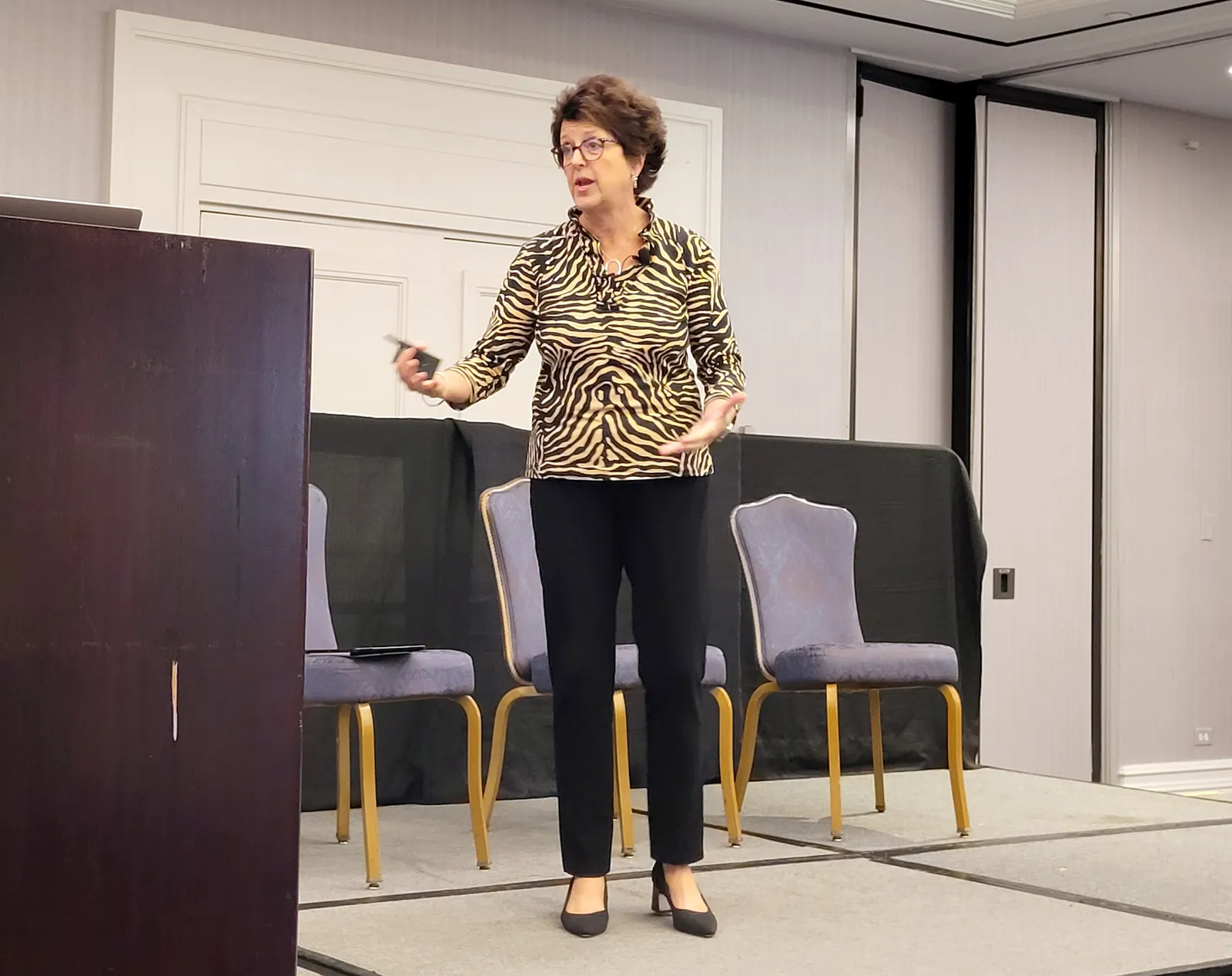
While traditional advertising typically relies on implied benefits for the consumer, companies need to take a different tack with their sustainability messaging, said Suzanne Shelton, senior partner at Shelton Group, an ERM Group company, during an educational session at the SPC Advance event in Chicago on Sept. 30.
Many companies are “getting caught flat-footed” because they try to communicate implied benefits of sustainability but “don’t have the facts to back them up,” she said. “If you're going to do sustainability advertising and messaging, it has to be all about specifics and proof points.”
The majority of people her company has surveyed know what greenwashing is, Shelton said. And when consumers perceive that a company is greenwashing, “they think that the company behind it is a bad company,” she said. “It’s really hard to get off the bad company list; you don’t want to get on it.”
Staying in good graces is tricky, though. Brands don’t want “an engineering dissertation on the side of your package,” Shelton said. “So greenhushing, we’re seeing a lot of that now.”
Hushing up
Sustainability communications firm Connected Impact released a 2024 report that it called a “transparency index” for corporate sustainability. It noted gaps in communications and transparency related to corporate sustainability data. It also highlighted the harms of greenhushing, saying that “investors may struggle to differentiate between companies that provide information just to support their appearance as a sustainable business, and those that have high levels of information and performance.”
Industry experts generally report understanding the sentiment behind brands’ desire to greenhush, even if they don’t support the outcome.
“I think it's logical that you don't rush to the press with every initiative until you see whether the initiative is going to pan out," GPI's DeFife said, while referencing greenhushing. “Change in this system is hard, and there's a lot of forces against change and improvement. So if folks are being more cautious, I think that's completely logical.”
The landscape is far more complicated now than a few years ago when brands started ramping up their public goals, he said, noting that targets and definitions are both changing. For instance, definitions that traditionally had been associated with only one packaging material or group of materials, such as postconsumer recycled content, now are being used in different material contexts.
Still, he expressed confidence that greenhushing is only affecting brands' marketing, and not their actual sustainability work: "I do not get any sense that brands are pulling back on sustainability efforts," DeFife said.
USPP’s Quinn also hasn’t seen evidence of brands pulling back on their sustainability work, only the messaging. He said companies should strive to educate consumers so they understand why changes and improvements are being made to systems like recycling and to corporate sustainability commitments. If consumers don’t know about an achievement, such as adding recycled content to packaging, they can’t celebrate it.
"We can’t be quiet. ... Hushing is not going to send us in the right direction."

Jonathan Quinn
CEO at the U.S. Plastics Pact
Others corroborated that brands are holding fast to sustainability work and felt they should be applauded for their ambitious commitments, not demonized if they fall short on some metrics.

"It's not OK to say we won't have an ambitious commitment," because such commitments drive progress toward climate goals, said McCormick's Okoroafor at PRS. "Please don't confuse making those commitments — they are rooted in science — with greenwashing."
South Pole’s most recent survey backs the belief that brands are still committed to their targets despite the spread of greenhushing. It found that 83% of surveyed companies continued to set net-zero targets, and 76% are increasing their budgets to meet their targets. Still, 44% of respondents said external communication on climate targets has become more difficult just in the last year. The report said that “greenhush is now the new normal” and “keeping quiet about climate action is setting us back.”
The authors recommend that companies strike a balance and become leaders in sustainability communication, because “being unwilling to communicate climate action out of fear of attack provides climate laggards with the cover to continue stalling on making meaningful change.”
Consumers want brands to have ambitious goals and publicize their progress, Shelton said at SPC Advance: “You should absolutely be communicating your sustainability story. People want to hear it. They expect to hear it from you. But it's got to be truthful.”
Although the prevalence of "greenhushing" in the packaging vernacular is on the rise, another factor could nip it in the bud before it expands further: data.
The industry is entering a new data-driven era that should help corporations back their claims, Reynolds said at PRS. The data reporting required under new EPR regulations has the potential to aid that, sources say. It's a matter of brands communicating that data correctly and not concealing negative pieces of information.
Although it’s not always easy, it’s important for companies to use data to corroborate their claims and fight the urge to stifle communication about their progress, Quinn said.
“We have to address these potential reasons to be hushed head-on by bringing forward tangible and very real examples of what [brands are] doing and aligning with certifications and organizations that establish science-driven targets,” he said. “But we can’t be quiet. ... It’s about transparency and clarity. Hushing is not going to send us in the right direction.”



